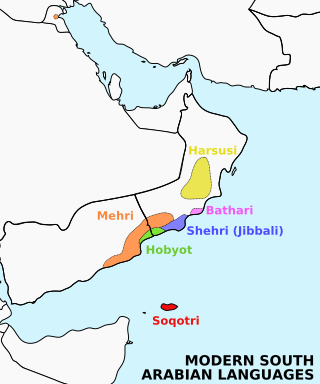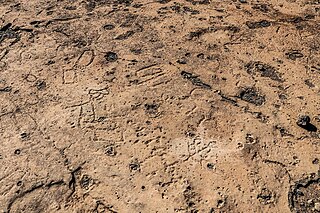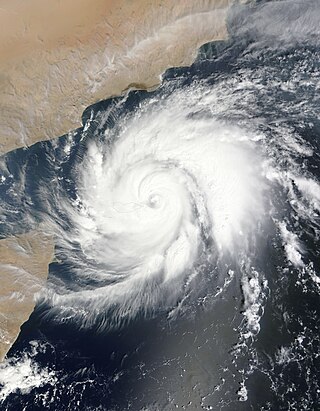
Tristão da Cunha was a Portuguese explorer and naval commander. In 1514, he served as ambassador from King Manuel I of Portugal to Pope Leo X, leading a luxurious embassy presenting in Rome the new conquests of Portugal. He later became a member of the Portuguese privy council.

Soqotri is a South Semitic language spoken by the Soqotri people on the island of Socotra and the two nearby islands of Abd al Kuri and Samhah, in the Socotra archipelago, in the Guardafui Channel. Soqotri is one of six languages that form a group called Modern South Arabian languages (MSAL). These additional languages include Mehri, Shehri, Bathari, Harsusi and Hobyot. All are spoken in different regions of Southern Arabia.

Socotra or Saqatri is an island of Yemen in the Indian Ocean. Lying between the Guardafui Channel and the Arabian Sea and near major shipping routes, Socotra is the largest of the six islands in the Socotra archipelago. Since 2013, the island has been part of the Socotra Governorate.

The Modern South Arabian languages (MSALs), also known as Eastern South Semitic languages, are a group of endangered languages spoken by small populations inhabiting the Arabian Peninsula, in Yemen and Oman, and Socotra Island. Together with the Ethiosemitic and Sayhadic languages, the Western branch, they form the South Semitic sub-branch of the Afroasiatic language family's Semitic branch.

Dhamar, also spelt Thamar, is a governorate of Yemen located in the central highlands.

The Mahra Sultanate, known in its later years as the Mahra State of Qishn and Socotra or sometimes the Mahra Sultanate of Ghayda and Socotra was a sultanate that included the historical region of Mahra and the Guardafui Channel island of Socotra in what is now eastern Yemen. It was ruled by the Banu Afrar dynasty for most of its history.

Hadibu, formerly known as Tamrida, is a coastal town in northern Socotra, Yemen. It is the largest town in the small archipelago, with a population of 8,545 as of the 2004 census. Hadibu is the capital of the Socotra Governorate and the larger eastern district of Socotra's two administrative districts, Hidaybū. Animal husbandry is the main source of income for the town's inhabitants.

Al-Shihr, also known as ash-Shir or simply Shihr, is a coastal town in Hadhramaut, eastern Yemen.

The Mehri, also known as the al-Mahrah tribe, are an Arabian ethnic group primarily inhabiting South Arabia especially in the Al-Mahra Governorate in Yemen and the island of Socotra in the Guardafui Channel. They are named after Mahra bin Haydan. They can also be found in the Sultanate of Oman, and the eastern region of the Arabian Peninsula.

Bjni, is a village in the Kotayk Province of Armenia. It is situated in a valley between canyon walls and a small river. The village is one of the prominent centers of education and culture of ancient and medieval Armenia. It is the birthplace of the 11th-century scholar Grigor Magistros.

The history of Socotra describes the cultures, events, peoples and strategic relevance for sea trade of what is Socotra, an island of the Republic of Yemen, currently under control of the United Arab Emirates (UAE)-backed Southern Transitional Council, a secessionist participant in Yemen's ongoing civil war. Lying between the Guardafui Channel and the Arabian Sea and near major shipping routes, Socotra is the largest of the four islands in the Socotra archipelago.

The Socotra Archipelago, officially the Socotra Archipelago Governorate, abbreviated to Socotra Governorate, is one of the governorates of Yemen. It includes a number of islands in the Indian Ocean south of mainland Yemen, the largest of which is Socotra.

Qulensya is a town on the main island of Socotra, Yemen. It is located in the Qulensya wa Abd al Kuri District and its approximate population is 4,000.

The Soqotri people, sometimes referred to as Socotran, are a South Arabian ethnic group native to the Gulf of Aden island of Socotra. They speak the Soqotri language, a Modern South Arabian language in the Afroasiatic family.

On 30 April 2018, the United Arab Emirates (UAE) deployed more than a hundred troops with artillery and armored vehicles to the Yemeni archipelago of Socotra in the Guardafui Channel without prior coordination with the Yemeni government, causing the relations of the two countries to deteriorate. The initial deployment consisted of UAE military aircraft carrying more than fifty UAE soldiers and two armored vehicles, followed by two more aircraft carrying more soldiers, tanks and other armored vehicles. Al Jazeera reported that shortly after landing, UAE forces dismissed Yemeni soldiers stationed at administrative installations such as Socotra Airport and seaports until further notice, and the flag of the United Arab Emirates was raised above at official government buildings in Hadibu. On 14 May an agreement was reached between the UAE and Yemen which saw Yemen regain administrative control and Saudi Arabian troops also being deployed to the island.

The Guardafui Channel is an oceanic strait off the tip of the Horn of Africa that lies between the Puntland region of Somalia and the Socotra governorate of Yemen to the west of the Arabian Sea. It connects the Gulf of Aden to the north with the Indian Ocean to the south. Its namesake is Cape Guardafui, the very tip of the Horn of Africa. Notable places of interest include the Alula Lagoon.

The Eriosh Petroglyphs or Iryosh Petroglyphs or petroglyphs of Ariyūsh are a group of petroglyph carvings in the north-western coastal plain of Socotra island, Yemen. The group consists of pecked or carved graffiti, feet, geometric and crucial shapes, animals and anthropomorphs. The site is of unknown origin and age.

The Battle of Socotra was a military engagement that took place on Socotra Island in 1507, and which resulted in the occupation of the Island by the Portuguese Empire.

Portuguese Socotra refers to the period during which the island of Socotra was ruled by the Portuguese Empire. Captured from the Mahra dynasty of Qishn in 1507 by Tristão da Cunha and Afonso de Albuquerque, it was later abandoned in 1511 and it reverted to the rule of Mahra.

Extremely Severe Cyclonic Storm Tej was a strong tropical cyclone that formed over the central-south Arabian Sea and made landfall on Yemen. It was the first cyclone to make landfall in the nation since Cyclone Luban of 2018. The sixth depression and the third named cyclonic storm of the season, Tej coexisted with Cyclone Hamoon in the Bay of Bengal, a rare phenomenon not seen since 2018. The cyclone then took a northwestward track in the Arabian Sea and made landfall in Al Mahrah Governorate of Yemen between 23 and 24 October 2023, bringing significant rainfall and flooding across the eastern half of the country and western parts of Oman.



















